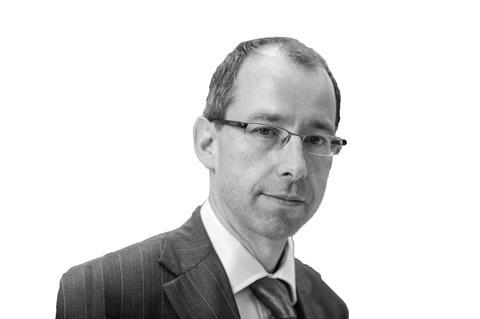By opening our eyes to the vulnerability of humanity covid has also forced us to confront the challenge of climate change, says KPMG’s Richard Threlfall

Imagine it is 2050, and you are being asked to look back to 2020 and comment on how life changed. What will you say? You probably assume I am inviting you to reflect on the impact of covid. And perhaps I am, but only at the margins. In the centreground, for me, is the awakening of the world’s response to climate change, and a more profound appreciation of our impact generally, as humans, on our planet and our societies.
This affects everyone, everywhere, but the readership of Building have more scope than most to make a difference. In her inaugural presidential address to the Institution of Civil Engineers, Rachel Skinner hammered home the message that those of us involved in infrastructure, building and construction are front and centre of the world’s challenge to tackle climate change, with our sector responsible for around 70% of all carbon emissions, through energy, transport, and materials such as cement.
Can we run this planet sustainably for a population of around 10 billion?
I see global warming as one of four mega-trends of our time, each of which leads to a fundamental question about the role we play through infrastructure.
First, the world’s growing population. Now 7.8 billion people, and projected to grow to more than 10 billion by the end of the century, but then starting to decline. Our first question is can we run this planet sustainably for a population of around 10 billion? Can we develop our clean water supplies, our sanitation, our food supplies, our education, our healthcare, our energy, transport and digital networks to support that number of global citizens?
Second, ever greater urbanisation. Today around 55% of the total global population live in an urban environment, up from about 35% when I was born in 1970, and projected to be around 70% by 2050. Some say covid will reduce the desire to live in cities and stall the urbanisation trend. As I argued in my last article for Building, I doubt that. The bright lights of cities will continue to draw us in, for financial and societal opportunity, for culture and for fun. Our second question is can we provide quality of life even when our expanding population is crowded into densely populated areas? Can we provide transport systems without air pollution and congestion? Can we provide decent, modern housing that doesn’t cram families together into small boxes? Can we provide open space, trees, clean the streets and manage crime?
Third, reduction in poverty, from around 1.7 billion individuals globally 30 years ago, to less than 700,000 today. Rising living standards across India, China, South America and now Africa, supported by the concerted efforts of multilateral development agencies and more enlightened rich countries, have driven this progress. And infrastructure has played a critical role, with schools supporting rising education standards, roads and railways connecting people to work and goods to markets, and airports and ports opening up global export opportunities. But trillions of dollars more investment is required to ensure that everyone can enjoy both prosperity and quality of life, in line with the United Nations’ Sustainable Development Goals. Our third question is, how do we maintain this momentum, in particular as governments are impoverished by the fight against covid, and the world lurches towards isolationist and protectionist policies?
Fourth, coming back to where I started, our continued destruction of the ability of the planet to support human and other life. Despite the breakthrough of the Paris Agreement and the commitment of nearly all the world’s countries to a trajectory well below 2 degrees, carbon emissions continue to rise. And we cannot celebrate if they drop this year, because lockdown is not something we want to repeat, and there is no vaccine for climate change. We have made progress, particularly in the rapid adoption of renewable energy, but we are still a long way from decarbonising the transport sector, and tackling heat emissions from buildings. Our fourth, final and most important question is, how do we galvanise ourselves to do what is necessary to halve greenhouse gas emissions by 2030?
Technology and money, I hear time and again, are the answers to these four questions. But they are not. We have nearly all the technology we need to run a world sustainably for 10 billion-plus people, and there is huge demand to invest in infrastructure, driving economic growth, tax revenues and ultimately funding itself. What is the answer is the willingness, of governments, businesses and individuals to do what is needed. The solution is in our hands and in our determination to work together, globally, to make the world a better place.
I don’t think covid will, ultimately, have a big impact on the trends of population growth, urbanisation and growing economic prosperity. But I do think it has played an important role in opening all our eyes to the vulnerability of humanity, and that 2020 will also be remembered as the year that we got collectively serious on climate change and sustainability generally.
Richard Threlfall is a partner and global head of infrastructure at KPMG
Interested in Net Zero?
On the 18 and 19 November Building hosted Net Zero Live.
Topics discussed included construction techniques through to operational use, repair and maintenance to what clients want.
Highlights include three live panel discussions, a key note interview and the exclusive release of the first three parts of Building Boardroom’s nine-part report on net zero, which includes insight from leading clients.
For more information and to register click here.




























No comments yet